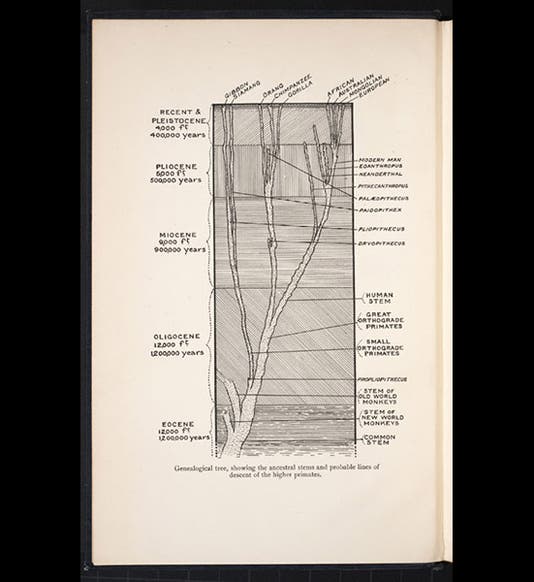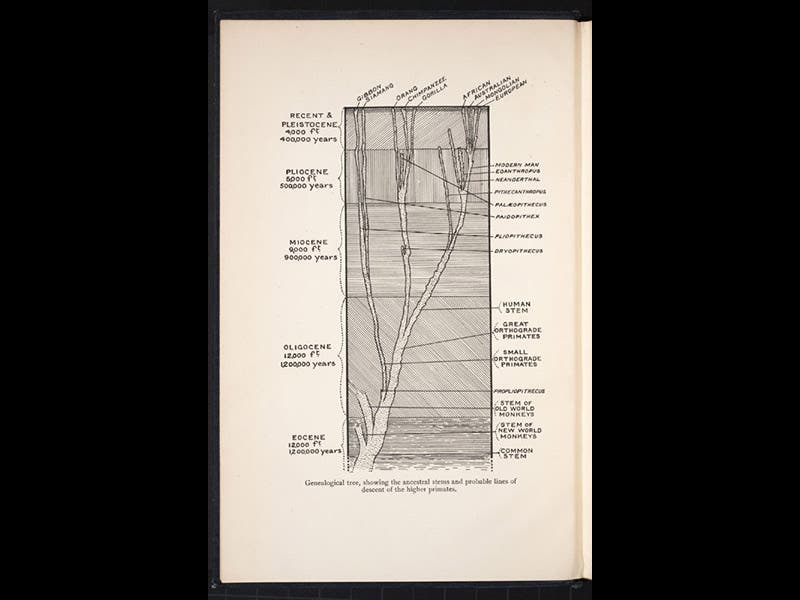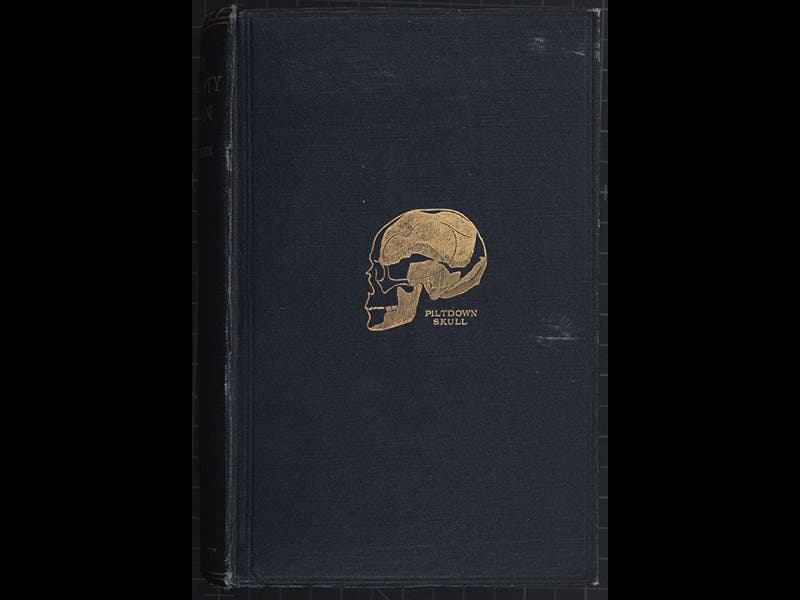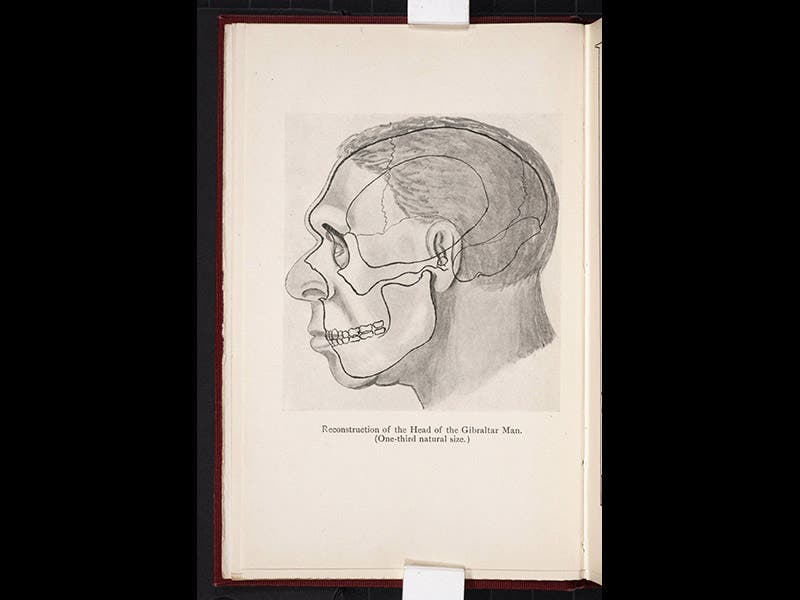Scientist of the Day - Arthur Keith
Arthur Keith, an English anthropologist, died Jan. 7, 1955, at age 88. Keith was one of the principal champions of Piltdown Man as an important pre-human ancestor, after its discovery in 1912. In 1915, Keith published a book, The Antiquity of Man, and the frontispiece to this work provides one of the first detailed human evolutionary trees (see first image above). All of the known human and primate fossils are included; you can see Neanderthal as an offshoot at upper right, and just below it, as another dead end, is Pithecanthropus, or Java man. Piltdown man, here called by its scientific name, Eoanthropus (dawn man) is the last off-branch before modern man. You will note that this tree leans to the right, or the "good side", as it goes upward, so that modern European man at the top is the farthest to the right, and thus visually presented as more advanced that modern Mongolian, Australian, or African humans. This bias in favor of European races, in evolutionary trees constructed by European anthropologists, is characteristic of much of 20th-century anthropology, and it has taken a lot of justifiable protest from non-European scholars to get such reconstructions straightened out and up and the biases removed. We displayed this plate in our 2012 exhibition, Blade and Bone: The Discovery of Human Antiquity.
The cover of Keith’s The Antiquity of Man has a gold-stamped image of the Piltdown fragments decorating its blue cloth (second image above). The book also contains a reconstruction of Gibraltar man, a skull found in 1848 and finally recognized in the 1860s as a Neanderthal (third image above).
Dr. William B. Ashworth, Jr., Consultant for the History of Science, Linda Hall Library and Associate Professor, Department of History, University of Missouri-Kansas City







![Using an astrolabe to measure the depth of a well, woodcut in Elucidatio fabricae vsusq[ue] astrolabii, by Johannes Stöffler, 1513 (Linda Hall Library)](https://preview-assets-us-01.kc-usercontent.com:443/9dd25524-761a-000d-d79f-86a5086d4774/a998eb50-55d2-4a88-ace2-a50aa5fa86e7/Stoffler%201.jpg?w=210&h=210&auto=format&fit=crop)

